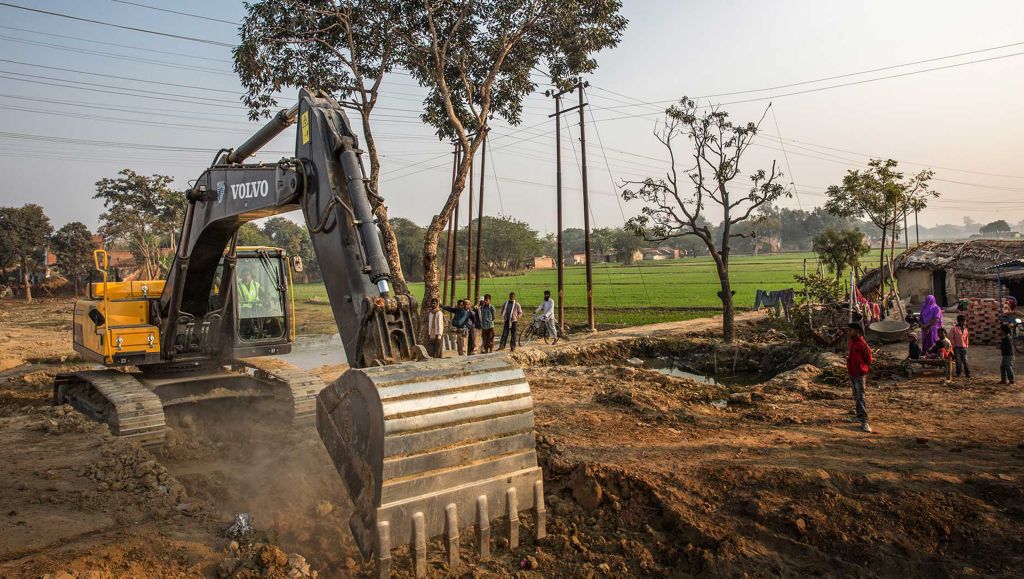Paving the way


“I started my business on a very tiny scale when this road was being expanded from a two-lane to a four-lane highway. Today, I earn Rs 200-Rs 400 (€2.50-€5) daily and I am certain that, once the highway expands further, there will be more development and my business will grow, particularly during festivals,” says Bindu Devi. NH2 is an integral part of India’s largest highway project – the Golden Quadrilateral – which was launched under the National Highways Development Project (NHDP) in 2001.
Every year, millions of foreign and domestic tourists visit the region for various festivals and religious ceremonies and travel between Varanasi and Allahabad. On these occasions, traffic on the highway comes to a grinding halt several times a day. The road infrastructure is not even close to being able to meet demand. During the busiest periods, the three-hour journey between Allahabad and Varanasi can take twice or even three times as long, crippling timely access to basic necessities and amenities for people living in the region. “The closest hospital with adequate medical facilities is in Varanasi and the road is sometimes so jammed that traffic is diverted to villages,” says Shyam Sunder Singh, a farmer who has been living and working in the region for 30 years. The heavy traffic adversely impacts local business and agrarian communities living in the 60 odd villages and districts in and around the highway. For instance, Bhadhoi district, renowned for its versatile carpet industry specialising in ancient Persian-style weaving, is completely dependent on this road for trade. The same applies to for several small and mediumscale farmers growing wheat, rice, seasonal vegetables and sugarcane.
The expansion of the Varanasi-Handia highway is a complex project that requires the construction of 15 elevated roads, in addition to widening the existing road. One of the biggest challenges is to manage daily traffic, as construction for the expansion will block at least four-five metres in the centre of the existing road. “We need to complete the project efficiently and smoothly, while delivering it in the fastest time. This requires precise planning and execution and this is where good machinery plays a very vital role,” explains Vinod Agarwal, Managing Director of G R Infraprojects. G R Infraprojects is the construction company that was awarded the contract for the expansion of the Varanasi-Handia highway. To do the job efficiently, G R Infraprojects has powered itself with 50,000 tonnes of steel, centralised yards, hundreds of fabricated units and equipment from companies like Volvo Construction Equipment.
Construction has just about begun and 14 Volvo CE machines are in top gear at the site. In addition to these 14 machines, G R Infraprojects has a fleet of more than 100 Volvo machines, including pavers, excavators and compactors, across its sites. It is estimated that the construction of one kilometer of a highway requires 4,076 days of labour. By that count, the Varanasi-Handia highway has the potential to generate approximately 300,000 days of work and it is estimated that nearly 3,000 people will find direct means of livelihood through the project. Shiv Babu is one such beneficiary. He is a resident of Bhiti village near Varanasi and worked on carpet weaving before the industry went into decline. His family was struggling to make ends meet, until he found employment as a labourer on the highway expansion project. “Today, I earn Rs 250 (€3.00) a day. Once this road is made, people like me can travel to bigger cities like Varanasi and seek better opportunities for employment. This will definitely help us,” he says.